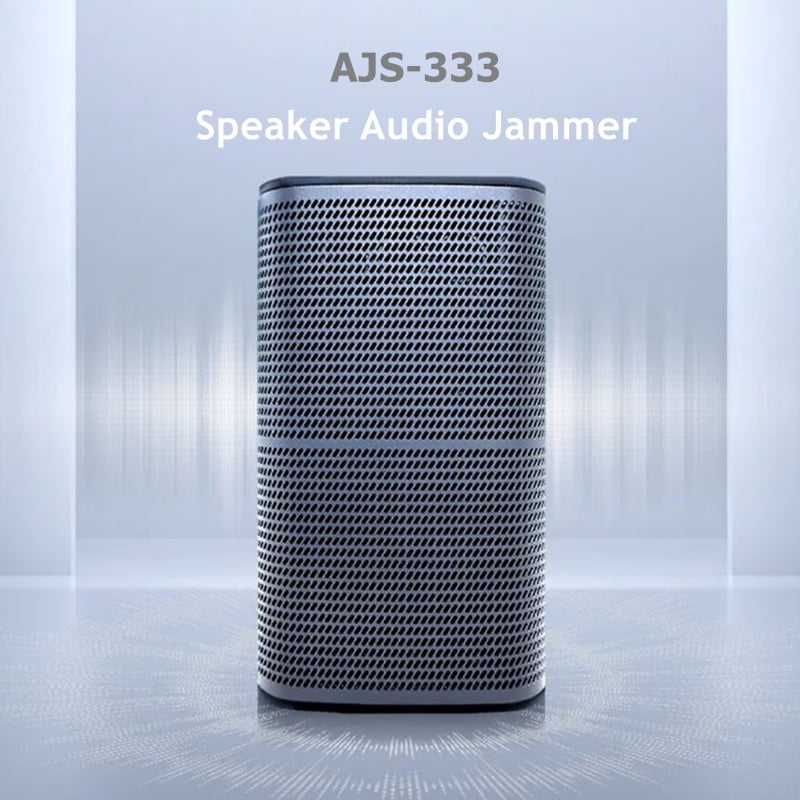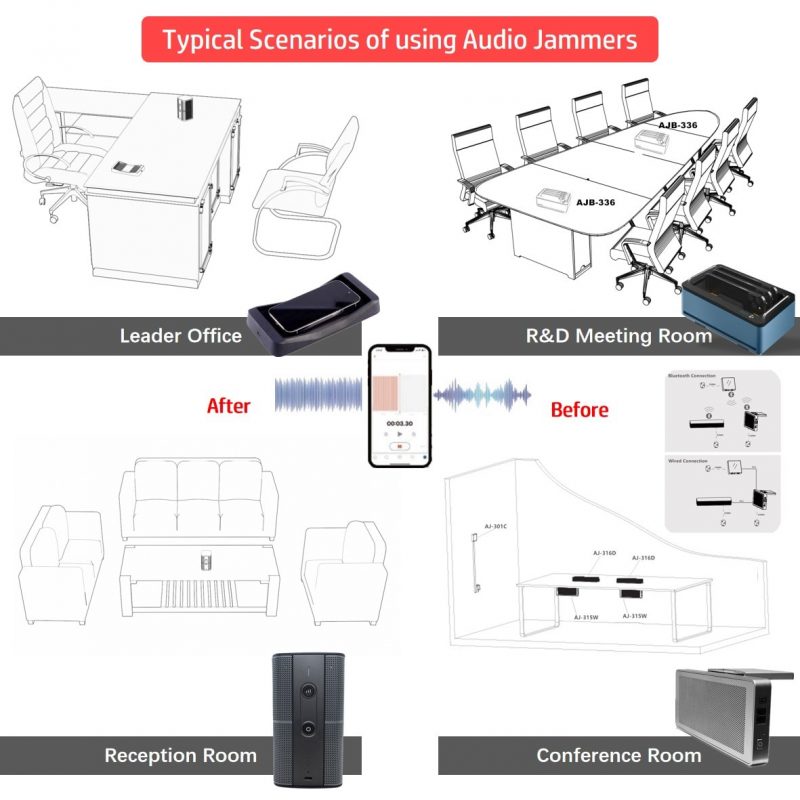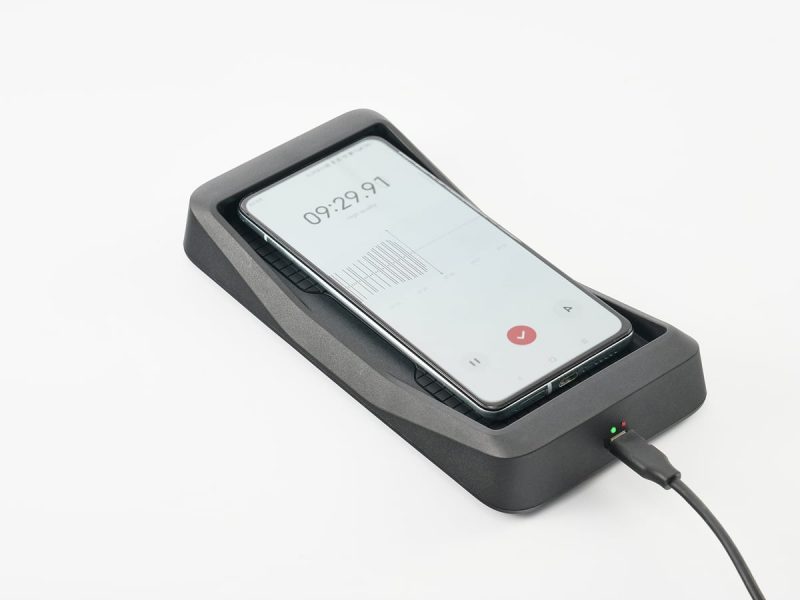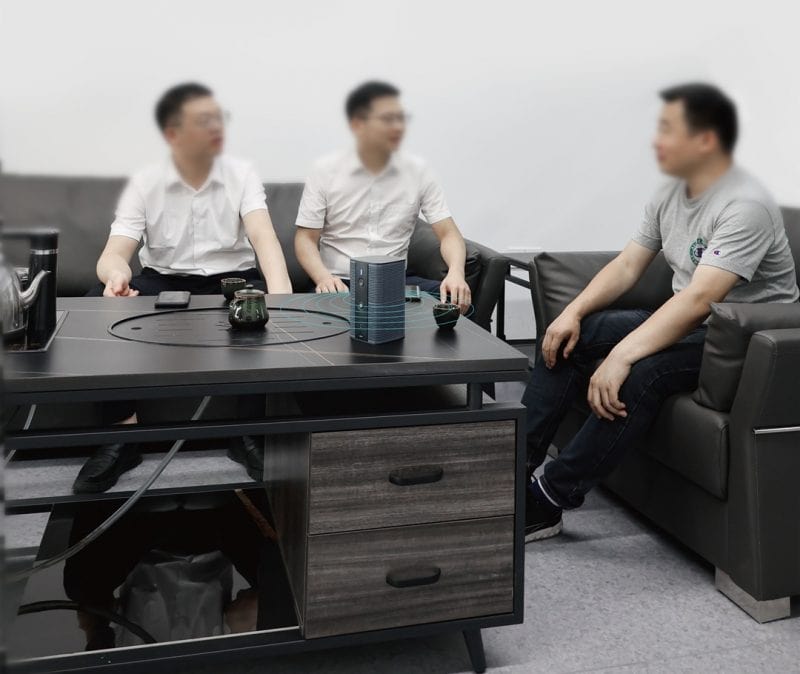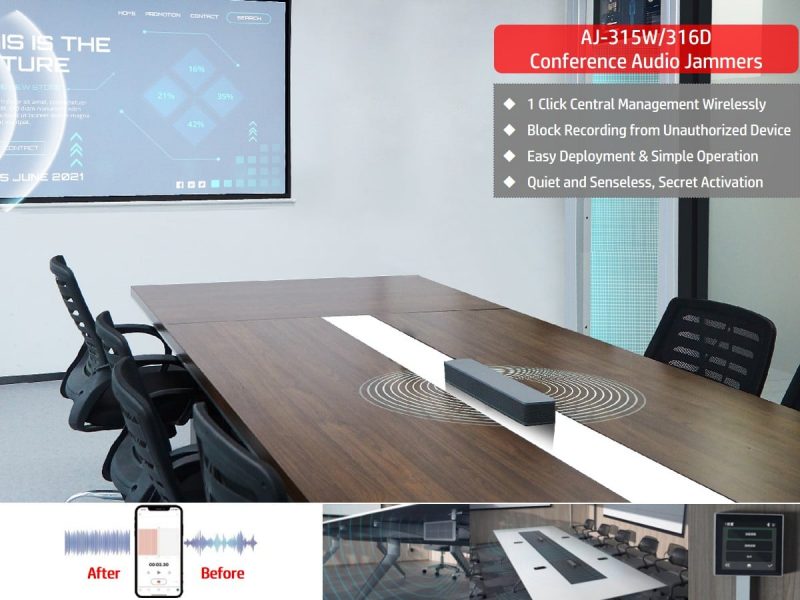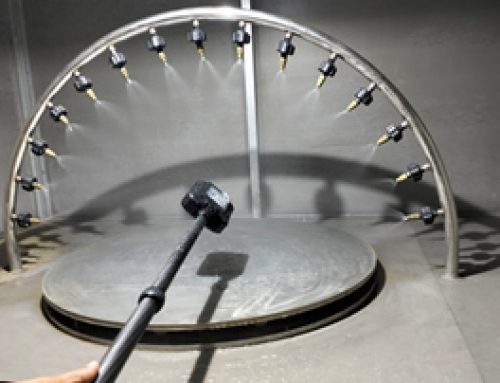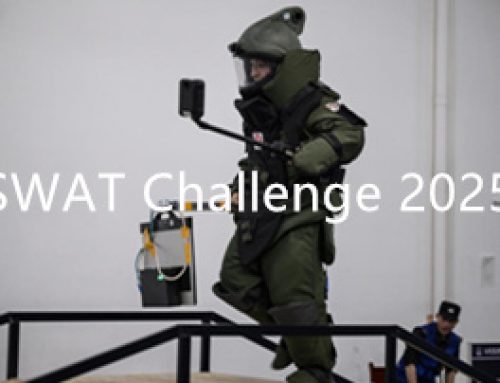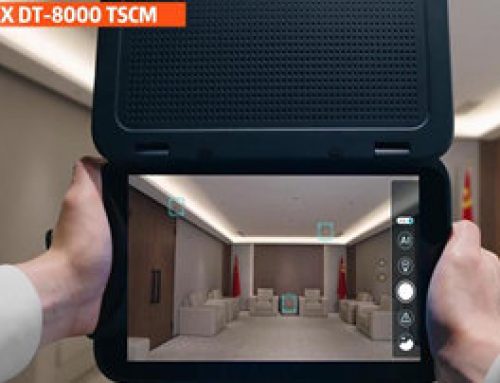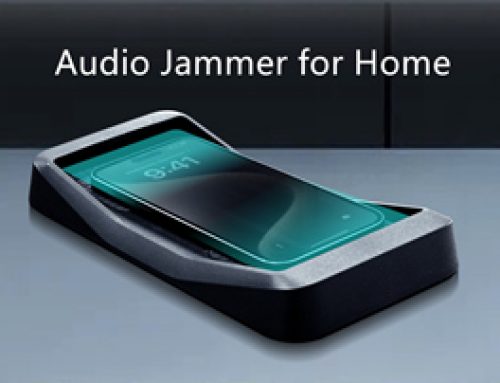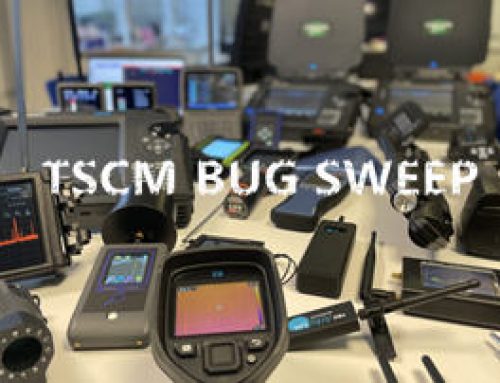5 Key Differences Between Ultrasonic Audio Recording Jammers and White Noise Generator Audio Jammers
In today’s increasingly connected world, protecting sensitive information has become more critical than ever. As surveillance technologies become more advanced, the risk of unauthorized recording and eavesdropping is present more often. Whether in business meetings, government offices, or personal conversations, the fear of private discussions being secretly recorded and used against you or your organization is a growing concern. This is where audio recording jammers come into play.
Two popular types of audio recording jammers are ultrasonic and white noise generator sound jammers. Both can be considered as acoustic jammer from technique aspect. They are popular tools designed to prevent unauthorized eavesdropping by disrupting audio surveillance devices. While both aim to prevent audio recording, they achieve this in fundamentally different ways. This article explores the five key differences between these technologies to help you decide which suits your needs. For a full demonstration of ultrasonic anti-recording jammers’ performance, please view [audio jammer solution from iSecus].
1. Working Principle
-
Ultrasonic Audio Recording Jammer:
Ultrasonic jammers operate by emitting high-frequency sound waves, typically above the range of human hearing (20 kHz+). These ultrasonic waves disrupt the functioning of microphones, making them unable to capture clear audio. So it is also called as ultrasonic microphone jammer.
-
White Noise Generator Audio Recording Jammer:
White noise generators produce a wide spectrum of audible noise, such as hissing or static-like sounds. This noise masks conversations by creating a sound field that mixes with speech, making it difficult for microphones to isolate and record spoken words. So it is also called as sound masking device.
-Full Spectrum (20 Hz to 20 kHz) – Most white noise generators produce sound across the entire audible frequency spectrum, from 20 Hz (low frequencies) to 20,000 Hz (high frequencies), as this range encompasses all the sounds that humans can hear. This is typical for most consumer-grade devices used for noise masking, privacy, or audio jamming purposes.
-Filtered Range (300 Hz to 3 kHz) – In some cases, white noise generators or jammers may focus on a more specific frequency range, such as 300 Hz to 3 kHz, which is where most speech and communication devices operate. This targeted range is effective for disrupting audio recording devices or preventing eavesdropping by masking speech frequencies.

2. Impact on Human Hearing
-
Ultrasonic Recording Jammer:
Ultrasonic sound waves are inaudible to humans, meaning that ost of the humanbody in the vicinity of the jammer won’t hear any noise. This makes ultrasonic jammers ideal for environments where silence is important. (Different people, their threshold of sensing frequency is varied.)
-
White Noise Generator Recording Jammer:
White noise generators produce audible sound, which can be heard by humans. While effective at masking conversations, the noise may be disruptive or irritating in quiet environments, especially for extended periods.
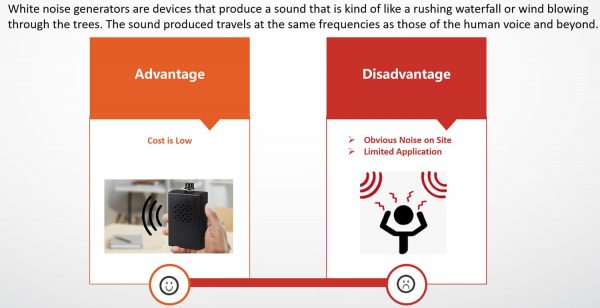
3. Effectiveness Against Microphones
-
Ultrasonic Audio Recording Jammer:
Ultrasonic jammers are highly effective against most modern microphones, including those in smartphones, digital recorders, and wireless devices. However, their effectiveness may diminish with highly directional or specialized microphones designed to filter high-frequency interference. That’s why, it is common that ultrasonic audio jammer’s jamming distance on Android phone is much better than Iphone.
-
White Noise Generator Audio Jammer:
White noise generators are effective against basic microphones and recording devices but may be less efficient against advanced technologies that isolate speech frequencies or use noise-canceling algorithms.
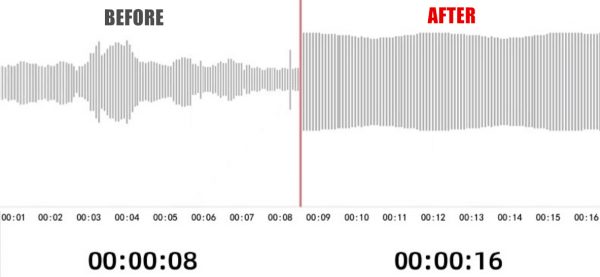
4. Coverage and Directionality
-
Ultrasonic Audio Jammer:
Ultrasonic waves are typically emitted directionally, meaning they are focused on a specific area. This allows for targeted protection but may require precise placement of the jammer. The range is also generally limited to a few meters. That’s is to say: When using ultrasonic audio jammers Camouflage devices, you have to understand that the jammers are used to jam area where there are humanbody who may bring with recording devices for unauthorized recording. Jamming a whole room is not realistic!
-
White Noise Generator Audio Jammer:
White noise generators provide broader coverage since the sound disperses in all directions. They are suitable for protecting open spaces without needing precise placement. However this is only discussion from technique aspect. To realize long distance jamming effect, it requires high power consumption hardware. Taking consideration of cost, Complexity, user feeling, by now, few solution is existed in the market. Till now, mainly Russian companies offer handheld white noise generator audio jammer for private privacy protection scenarios.
Below picture is a jamming converage reference concerning one model of iSecus Ultrasonic Audio Jammer.

5. Cost Difference
-
Ultrasonic Audio Jammer Cost Range: Moderate to High, USD1000 ~USD10000
Ultrasonic jammers require specialized hardware, such as high-frequency transducers and amplifiers, capable of generating frequencies beyond the human hearing range. These components tend to be more expensive due to their precision requirements. Besides, jammers with intelligent algorithms for detecting active recording devices or adjusting frequencies dynamically are at the higher end of the cost spectrum.
-
White Noise Generator Audio Jammer Cost Range: Low to Moderate, USD150~USD3000
White noise generators rely on standard audio technologies, such as speakers and amplifiers, to produce broadband noise across audible frequencies. These components are relatively inexpensive and widely available. Less precision is needed compared to ultrasonic devices, keeping costs lower.
Which type of audio recording jammer to choose? Please check below comparison Summary:
| Jammer Types | Ultrasonic Audio Recording Jammers | White Noise Generator Audio Recording Jammers |
|---|---|---|
| Cost Range | $1000–$10,000+ | $150–$3,000 (Common, not refers to Military Level) |
| Technology Complexity | High | Moderate to Low |
| Primary Cost Drivers | Precision hardware, directional sound | Speaker quality, area coverage |
| Effectiveness Against Devices | High (modern, high-end devices) | Moderate (can be bypassed by advanced filters) |
| User Experience Impact | Minimal (silent for humans) | Noticeable (audible noise) |

Conclusion
Both ultrasonic audio recording jammers and white noise generators are effective tools for safeguarding conversations from being recorded. Understanding their differences helps in selecting the right solution for your environment. Ultrasonic jammers prioritize discretion and focused protection. While white noise generators are cost-effective and accessible, making them suitable for smaller-scale or temporary applications. Consider your environment, budget, and specific needs when making your decision.
(Experience: If you are going to invest on those portable noise generator, please lower your expectation)
Are Audio Jammers Legal?
The legality of audio jamming (blocking) devices is a critical consideration and depends heavily on the jammer’s method of operation and country location. It’s essential to understand the jammer’s working principle first.
(Disclaimer: The below information provided here is for educational purposes only. It is not legal advice. )
Devices that Actively “Jam”
Devices that actively transmit radio frequencies to block, jam, or interfere with communication signals (including cellular signal, WiFi, GPS, and some microphone protocols) are **highly regulated and often illegal** for civilian use in most countries, including the USA (under FCC rules) and the UK (under Ofcom). The sale, marketing, and use of such signal jammers in Public are typically restricted to authorized government and law enforcement agencies.
Devices that “Mask” Sound or “Deceive” Microphone
Devices that **do not transmit radio frequencies** but instead protect conversations by generating sound (either ultrasound or audible white noise) are fundamentally different. These sound maskers or speech protection devices are **generally legal to own and operate** in most jurisdictions, as they do not interfere with licensed radio communications. However, “jammer” itself is a very sensitive word in many countries when importing devices from abroad.
Several Well-known Audio Recording Jammers in the world
Here we would like to suggest some high-level camouflage audio recording jammers for your reference.
Santor Harp from Canada
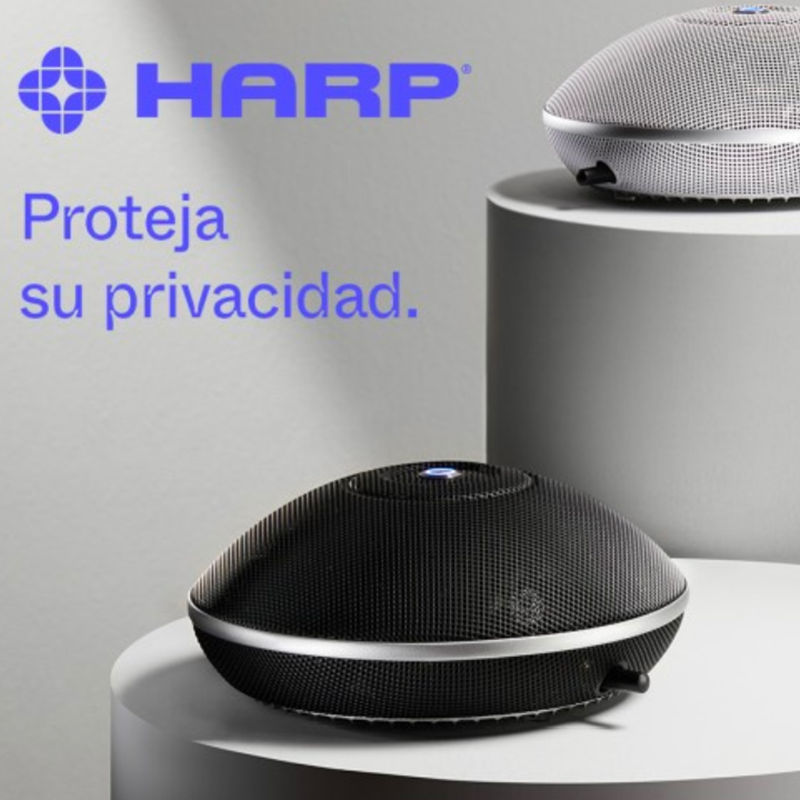
Sel Omni Tower from Europe

| Feature | Santor Harp | Sel Omni Tower | iSecus AJS-333 |
|---|---|---|---|
| Jamming Technology | White Noise | Ultrasonic | Ultrasonic Mixing |
| Target User/Aplication | government, military,
diplomat, corporation |
Conference Table, Desk | 2-4 Private Meeting |
| Operational Concealment | Audible Noise | Silent | Silent or Playing Music |
| Case Design | Functional Appearance | Technology Appearance | Model Camouflage BL Speaker |
| Size | 8.26cm (H)*20.7cm(D) | 37cm (H)*16cm(D) | 16.8cm(H) * 9.4cm(W) *9.4cm(L) |
| MSRP | $$$$$ | Euro 8758 | (Inquire for Price) |
Ultrasonic Anti Recording Phone Box for Multiple Devices

| Model | ASU2.0 | ATMO | AJB-332 | AJB-336 |
|---|---|---|---|---|
| Brand | EO Security | Tesly | iSecus | iSecus |
| Origin | Czech | Italy | China | China |
| Technology | Ultrasonic | Ultrasonic | Ultrasonic | Ultrasonic |
| Features | 4 Slots, Wooden Material, Network Connected | Wireless charger, Remote Control, Always-connected devices | 2 Slots, Built-in Battery for Over 8 hours, Auto-Sensing, Network Connected | 4 Slots, Built-in Battery for Over 4 hours, Auto-Sensing, Network Connected |
Audio Jammer App vs. Hardware: Know Your Protection Level
Noise Generator Apps
Logic:
Plays audible white noise via phone speaker.
The Defect: Hardware Limitation.
Phone speakers cannot emit ultrasound. The noise is audible to humans but is easily removed by AI noise reduction tools.
Microphone Blocker Apps
Logic:
Software-level permission locking.
The Risk 1: Vulnerable to Exploits.
It works on the OS level. Advanced spyware (Root-level malware) can easily bypass software locks without you knowing.
The Risk 2: Zero Trust Issue.
You are fighting App with App. If your phone's OS is compromised, the App is useless.
Ultrasonic Box like AJB-332
Logic:
Ultrasonic Suppression Chamber.
The Advantage 1: Active Jamming.
Once inside, ultrasonic waves physically overload the microphone diaphragm. It creates a "Sound Vacuum" that no software can filter out.
The Advantage 2: OS Independent.
We don't rely on the phone's security. Whether the phone is infected or not, the protection is 100% Physical.
The Bottom Line: Audio Jammer app can always be hacked. Physical Phone audio jammer box cannot.
2 Main reasons making Ultrasonic Audio Recording Jammer Devices becoming the trend to block voice recording:
Concealment of Ultrasonic Interference
- Advantages: Ultrasonic interference operates at frequencies typically beyond human hearing (above 20kHz). It effectively disrupts recording devices while having minimal to no direct impact on human hearing.
- Trend Reason: Modern society places increasing importance on privacy protection and user comfort. Ultrasonic interference offers a discreet and user-friendly solution, aligning with the demand for “unnoticeable protection.”
Precision in Disruption Capability
- Challenges in Modern Recording Device Defense: Many recording devices are equipped with noise-canceling capabilities to filter out ambient noise like white noise. However, ultrasonic interference can directly target the hardware of recording devices, such as microphone membranes, disrupting their functionality through high-frequency vibrations or circuit interference.
- Trend Reason: As recording devices become more resistant to ambient noise, the hardware-specific advantages of ultrasonic interference become increasingly valuable, meeting the demand for more robust protection.
Choosing Your Solution from iSecus Collection: From Personal Gadgets to Conference Room Systems
Our audio jammers are developed according to specific application scenarios. With a clear scenario in mind, you can choose the most suitable jammers and design the optimal layout for maximum protection.
Now that you understand the core differences between the technologies, explore our complete collection of [Professional Ultrasonic Audio Jammers] to find the perfect model for your security needs.
Cellphone Ultrasonic Audio Jammer Box
Available Options: AJB-331, AJB-332 for 2 phones, AJB-336 for 4 phones
Shape: Box
Purpose: To block cellphone positive recording or passive recording through eavesdropping apps to take unauthorized voice recording;
🔐 WHO NEEDS THIS?
✔ Executives & Board Members
✔ Legal Professionals
✔ R&D Teams
✔ Government Personnel
Portable Ultrasonic Audio Jammer
Available Model: AJS-333
Shape: Bluetooth Speaker
Purpose: Silent Microphone Jammer for anti recording
🔐 WHO NEEDS THIS?
✔ Executives & Board Members
✔ Legal Professionals
✔ Private Meetings
✔ Government Personnel
Audio Jamming Solution for Conference Room
Selection Suggestions: Which Model Fits You?
Choose the best ultrasonic solution based on your primary application scenario: Concealment, Mobility, or Coverage.
AJS-333 (CAMOUFLAGE)
Maximum Concealment
Designed for covert operations or sensitive situations where exposing security equipment is not desirable. Disguised as a common Bluetooth speaker.
View AJS-333 DetailsAJB-332 (2 SLOTS)
Maximum Mobility
Ideal for frequent travelers, high-level executives, and lawyers who require security in temporary spaces like hotels or private vehicles.
View AJB-332 DetailsAJB-336 (4 SLOTS)
Maximum Coverage
Designed for high-capacity use in dedicated secure environments, such as corporate boardrooms, R&D labs, and governmental meeting rooms.
Get AJB-336 QuotationCommon Misconceptions & In-Depth Analysis
Q1: What Are the Real Limitations of Ultrasonic Jammers?
A1: Understanding the physical properties of ultrasonic waves is key to effective deployment of camouflage jamming solution. For best results, please consider the following:
- Line-of-Sight is Crucial: Ultrasonic waves travel in a straight line, similar to a beam of light. They can be reflected by solid objects and absorbed by soft, porous materials.
- Ensure a Clear Path: For maximum effectiveness, there must be a clear, unobstructed path between the jammer and the potential recording device.
- Strategic Layout: Designing the necessory required jammer qty and arranging strategic payout of these jammers is important to reach the best jamming result.
Q2: How to differenciate White Noise Generator and Ultrasonic Audio Jammers in short?
A2: A white noise generator masks conversations by adding audible sound to the environment, making speech difficult for a microphone to isolate from the noise. In contrast, an ultrasonic jammer silently disrupts the microphone’s diaphragm with inaudible high-frequency waves, making it unable to receive the true sound at the source.
Q3: Will the ultrasonic wave damage my phone or my hearing?
A3: No. Ultrasonic wave is Merchanical wave. It has been used in a wide range of applications related to our life. Our frequency is focused on the microphone diaphragm and has no known impact on human hearing or phone hardware. Just make sure when use the audio jammers, do not put our ear close to the devices, otherwise, our ears will feel depressed.
Q4: Are the AJB audio jammer phone boxes future-proofed for new, larger flagship models (e.g., with thick cases
A4: Yes. The internal slot dimensions (e.g., 173mm x 86mm) were engineered to accommodate the largest flagship models on the market today and in the near future, ensuring 100% suppression even with rugged protective cases.
Q5: Are the AJB series jammer box working with latest iPhone 17?
A5: Yes. They are working perfectly. Within the jamming box, it is 100% jamming effect, regardless of phone brands & models.
Ready to Secure Your Confidential Conversations?
Choose your next step: get a customized quote or explore the full product catalog.

